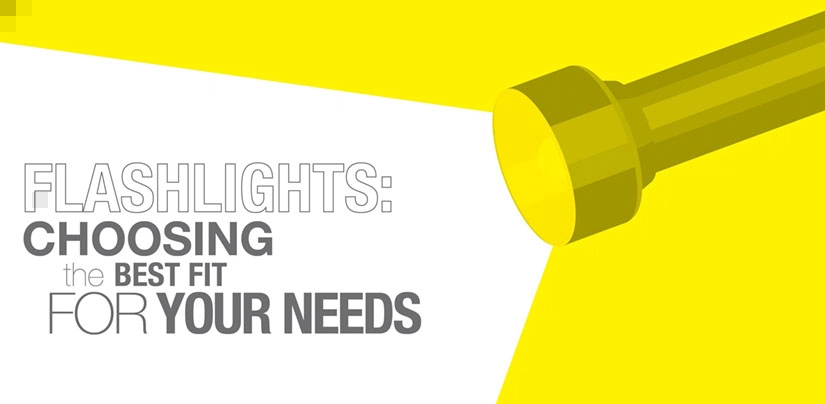
Mr. Electric guides you in selecting the ideal flashlight for your needs:
|
Facing the flashlight wall in your local hardware store a bit more fearsome than you expected? Today’s flashlights offer a vexing amount of variety… Loads of lumens, a serious selection of sizes, a plethora of price points… Where’s a person to start?
Step 1: Figuring out your flashlight needs
Typically, your average home or business owner goes looking for a flashlight to turn to in the event of an emergency or power outage. Just as you can’t bake a cake in a fry pan, a penlight isn’t going to get it done in an underwater cave. The first step if finding a fantastic flashlight is identifying your flashlight needs, such as:
- Power outages
- Safety
- Self defense
- Law enforcement
- Search and rescue
- Hunting
- Camping
- Hiking
- Marine use
- Scuba diving
- And many more specialized applications
Step 2: Buddying up to the best bulb
Incandescents
Incandescent bulbs are less efficient than other types of flashlight bulbs, but offer powerful, focused distribution of white light over long distances. Be wary however, they’re not as durable or shock proof as other options.
LEDs
Though not as powerful as incandescents, the soft, easy glow of light emitting diodes boasts durability and a long life – up to 100,000 hours – saving you replacement bulb hassles and money long-term.
HID
High intensity discharge bulbs last twice as long as incandescents, producing light many times brighter using less power, but requiring a ballast for current control.
Step 3: Boning up on brightness
Brightness is essential to flashlight functionality. If you’re lacking in light, you’re unlikely to be satisfied with your purchase. Be sure to differentiate between lumens, which measure all visible light, from candlepower, which measures the brightest spot in the flashlight’s beam. Try experimenting with a few different types of flashlights to figure out the amount of light you’ll need. For example, a single lumen keychain light may loosen a lock, a 20 lumen light brighten a book, and an 80 lumen light blind a burglar.
Step 4: Discerning distance
Varying based on the brightness of the setting and measured in meters, distance shows how far light will shine before diminishing to the equivalent of the light from a full moon, the amount of light considered safe for outdoor travel.
Step 5: Bear in mind beam type
The lens reflector surrounding the bulb can disperse the beam in different ways:
Flood/fixed:
A single beam good for camping task lighting or walking.
Spot/focused:
A condensed single beam for penetrating long distances, such as needed in past-paced activities/route finding.
Adjustable:
Adjustable to any range, from wide to focused.
Step 6: Pondering power
Disposable batteries
Offer longer run times than rechargeable. Typically lower initial pricing, but with considerably higher long-term operation costs.
Alkaline
Alkaline powered flashlights are an inexpensive solution to meeting power outage needs. Combined with an LED flashlight, batteries can last days.
Lithium ion
Unlike alkaline, maintain a constant voltage for up to 95% of their life. Low resistance, and ideal for heavy loads.
Rechargeable flashlights
Extraordinarily inexpensive to operate and great for frequent use. Higher in initial purchase price due to custom charge holders, but can support a brighter bulb. Offer significant savings over battery-operated lights, but have a faster discharge rate when stored.
Renewable
Feature built-in batteries powered by a hand crank or solar panel. Great for emergency kits.
Having a hard time following through on your latest bright idea? From flashlights to floodlights, Mr. Electric® can help you see the light. Contact us today!

